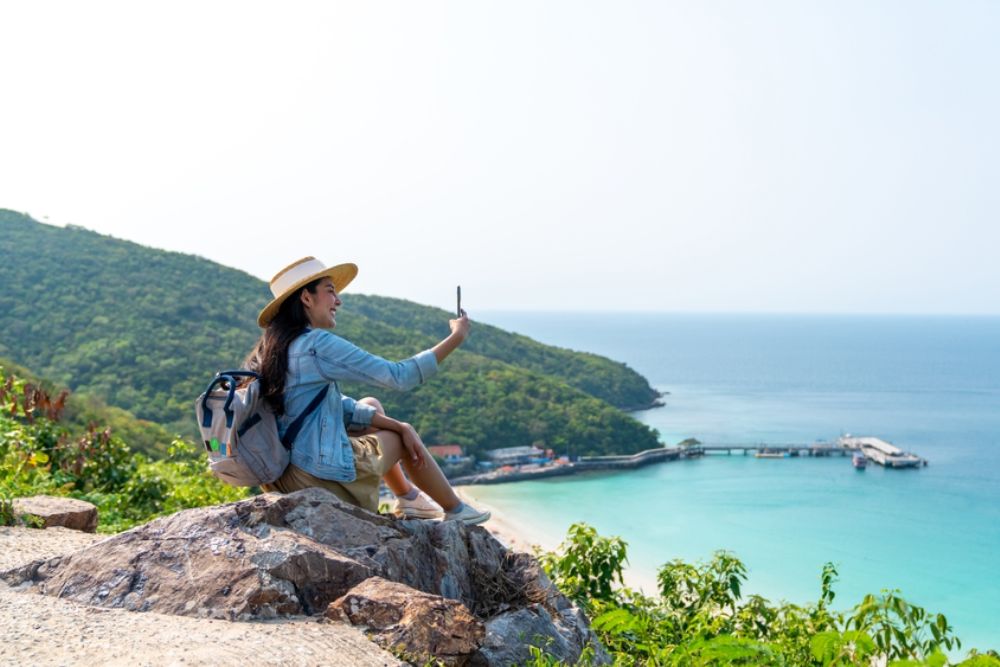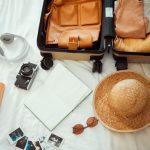Traveling alone can be a life-changing experience, a journey that fosters self-discovery, independence, and cultural immersion in a way group trips rarely match. Yet, for many, the idea of venturing into new places unaccompanied stokes intense fear—from worries about safety to questions like, “Will I get lonely?” or “Am I prepared for emergencies on my own?” Despite these apprehensions, countless solo travelers find that once they take the initial plunge, the rewards far outweigh the risks. This article will walk you through how to overcome fear, plan effectively for single-person trips, and truly thrive when traveling by yourself—helping you transform anxieties into confidence while exploring the world on your own terms.
1. Confronting Myths and Misconceptions About Solo Travel
Why It Matters
Solo travel can be perceived as risky or lonely. Though legitimate challenges exist, many myths surrounding the concept paint an incomplete picture. Dispelling these myths is a crucial first step in conquering your fear.
Myth-Busting
- “Traveling Alone Is Dangerous”: While being alone can present unique safety considerations, it doesn’t automatically equal vulnerability. Exercising the same awareness and caution you’d use in daily life—like avoiding deserted areas at night or telling loved ones about your itinerary—often suffices.
- “I’ll Be Lonely the Whole Time”: Some solitude is part of solo travel, but it’s often a fulfilling solitude. Plus, meeting new people can be easier when you’re not in a group. Hostels, guided tours, or traveler-friendly apps help you make connections quickly.
- “It’s Only for the Extroverted or Experienced”: Traveling alone doesn’t require an outgoing personality or major experience. Introverts, too, can enjoy solo journeys—often even more, as they pick their own pace. Everyone starts somewhere, and the learning curve is part of the adventure.
- “I Need a Lot of Money”: While international flights or hotels can be costly, thrifty planning strategies—like budget accommodations, off-peak travel, or shorter, targeted trips—make solo travel feasible on a variety of budgets.
Takeaway
Recognize that while potential challenges exist, they can be minimized with common-sense precautions and planning. The fear of dangerous outcomes or endless loneliness can overshadow the real joys of independence and personal growth.
2. Preparing Mentally: Building the Right Mindset
Why It Matters
Beyond practical steps, conquering the emotional side of traveling solo is key. The notion of stepping into unknown places without a companion’s reassurance can spur anxiety. Cultivating the right mindset helps transform those jitters into excitement.
Strategies
- Start Small: Before a big international trip, try a weekend getaway in a nearby city—learning how you handle solo dining, navigating alone, and quiet evenings with your own company.
- Set Realistic Expectations: Accept there may be lonely moments, minor mishaps, or times you question your decision. Confidence grows as you solve problems independently.
- Visualize Success: Picture yourself having fun—exploring museums at your pace, engaging with locals, reading at a café. Positive imagery reduces fear of the unknown.
- Leverage Online Communities: Social media groups or forums for solo travelers can reassure you that many have done this successfully, often forming friendships or communities abroad.
Takeaway
A self-assured, open mind is your greatest asset on the road. Embrace the possibility of both mishaps and triumphs—knowing each experience can be a learning moment that forges newfound independence.
3. Thorough Planning to Ease Anxiety
Why It Matters
While spontaneous adventures can be thrilling, first-time solo travelers often find comfort in meticulous planning. Laying out a framework for transport, accommodation, and daily itineraries curbs uncertainty, letting you focus on enjoying the journey rather than feeling constantly on edge.
Key Planning Areas
- Transportation:
- Research Airport Transfers: Pre-book a shuttle or rideshare if arriving late, ensuring safe transit to your hotel.
- Look into Local Transit: Understanding bus routes, train systems, or ride-hailing apps means less confusion upon arrival.
- Accommodation:
- Location: Prioritize safer neighborhoods or near main attractions. Reading reviews on safety, cleanliness, and staff helpfulness is essential.
- Hostels vs. Hotels: Hostels can be social hubs, perfect for meeting other travelers if you want camaraderie. Hotels, or private rooms in hostels, provide more privacy.
- Daily Schedule:
- Pre-Book Key Events: Purchasing museum or tour tickets in advance can give structure. Knowing you have a morning’s activity set helps anchor your day.
- Leave Flexibility: Don’t over-schedule every minute. Embracing spontaneous invitations or exploring hidden corners can be the highlight of a solo trip.
Takeaway
Strong preparation—particularly for tricky transitions like arrival day or nighttime transport—calms a lot of the typical anxieties around getting lost or stuck. With basic logistics covered, you’ll have more mental bandwidth to embrace local culture.

4. Safety Measures That Boost Confidence
Why It Matters
Fears about personal safety deter many from going it alone. While no traveler is immune to hazards, employing prudent safety practices greatly reduces risks—making you feel more secure wherever you roam.
Practical Tips
- Stay Aware of Surroundings: Avoid burying your nose in a phone on deserted streets. Project calm confidence in public spaces.
- Communicate Itinerary: Leave a basic itinerary with a friend or family. Check in occasionally, so someone knows if you vanish from contact.
- Trust Your Instincts: If a situation or person feels off, distance yourself. If your gut says the accommodation is sketchy, it’s worth switching.
- Local Emergency Numbers: Make sure you have local police/ambulance contacts in your phone. Also note your embassy or consulate details if traveling abroad.
- Minimal Flash: Dress modestly relative to local norms, keep expensive items concealed, and use a discreet bag or money belt for cash.
Takeaway
By layering these basic safety protocols, you significantly limit exposure to petty crime or personal harm. Confidence grows when you know you’ve prepared effectively for potential emergencies.
5. Meeting People and Socializing as a Solo Traveler
Why It Matters
Loneliness is a prime concern for many solo travelers. But ironically, traveling alone often fosters more organic interactions—be it chatting with other tourists in a hostel lounge, striking conversations with locals, or connecting via travel apps.
Ways to Connect
- Group Tours or Classes: Day tours or cooking classes let you meet others with shared interests. Instantly, you have conversation starters and potential new friends.
- Hostel/Guesthouse Social Spaces: If you’re comfortable with communal areas, you’ll likely find fellow travelers game for exploring or swapping stories.
- Volunteering or Cultural Exchanges: Activities like homestays or volunteering provide deeper local interactions and camaraderie.
- Online Communities: Using social media groups or apps like Couchsurfing for meetups can help you find travel buddies for day trips.
Takeaway
Being alone doesn’t mean staying isolated. If you want companionship occasionally, proactively join group activities or lodging with social spaces. You can always retreat to solitude if you prefer a quiet evening.
6. Budgeting and Managing Money Solo
Why It Matters
When traveling alone, you don’t split hotel or transportation costs with a partner, making mindful budgeting crucial. Nonetheless, you also have complete autonomy on spending choices—no group pressure or compromise.
Money Tips
- Set a Daily Budget: Breaking your overall trip budget into daily caps helps avoid blowing money early.
- Use Cash Strategically: In some places, cash is king. Keep daily allowance separate and store extra funds in a safe spot.
- Banking Alerts: Enable travel notifications on your bank cards and keep an emergency credit card hidden in case of theft/loss.
- Eat Like a Local: Street food or local markets are often cheaper (and more authentic) than touristy restaurants.
Takeaway
Embrace the freedom to tailor your expenditures strictly to your own tastes, but remain vigilant about overspending. With no one to split costs, small daily savings can sum up to significant amounts over a longer journey.
7. Embracing Flexibility and Adaptation
Why It Matters
One of the joys of solo travel is full freedom—but that also means you handle unexpected changes alone. Train canceled? Room overbooked? You must adapt on the fly. Approaching these hiccups with resilience fosters self-reliance and a sense of adventure.
Adaptation Strategies
- Have a Backup Plan: Jot down alternative routes or accommodations. For bigger trips, keep an offline map and some emergency contact numbers.
- Stay Calm and Creative: Panicking rarely solves problems. Often, there’s a silver lining—like discovering a hidden gem while waiting for the next bus.
- Build in Slack: Don’t plan every transfer with zero margin. A day or half-day buffer can accommodate disruptions or detours.
Takeaway
Flexibility is a powerful ally. With self-assurance that you can handle curveballs, you’ll maintain confidence and see challenges as part of the narrative rather than catastrophes.
Embarking on a solo trip for the first time can be nerve-wracking—full of what-ifs and doubts about safety, loneliness, or your ability to handle hiccups independently. Yet, for every anxiety-laced “what if,” there’s a corresponding reward: deeper personal growth, the thrill of conquering new challenges, and forging your own path without compromise. By tackling fears head-on—through well-researched itineraries, basic safety protocols, a thoughtful packing approach, and a willingness to engage with new friends or locals—you transform anxieties into a sense of mastery and liberation.
Whether it’s a weekend city break in a neighboring state or a months-long backpacking journey overseas, the principles remain the same: start modestly if you’re new, be realistic in your planning, and remain open to unscripted moments. Over time, as you accumulate more travel experiences, your confidence in traveling alone soars—and the once foreign concept of “solo travel” becomes not only feasible but exhilarating. Accept that occasional loneliness or unexpected challenges might arise, but remember that each triumph or solved problem will fortify your independence, making you realize just how capable you truly are.
So take that bold step. Embark on your solo journey, trusting that with caution, curiosity, and resourcefulness, you can transform a solitary trip into one of the most empowering adventures you’ll ever experience. Safe travels—and savor the unique joys that only come from discovering the world on your own.


